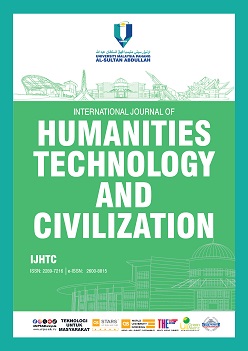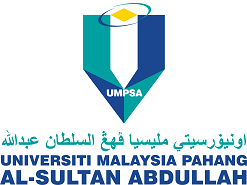PRIORITIZING EMERGENCY MANAGEMENT PHASES IN ELEMENTARY SCHOOLS: A CASE STUDY USING TECHNIQUE FOR ORDER OF PREFERENCE BY SIMILARITY TO IDEAL SOLUTION (TOPSIS)
DOI:
https://doi.org/10.15282/ijhtc.v10i1.11881Keywords:
Elementary Schools, Mitigation, Preparedness, Response, RecoveryAbstract
Emergency management is critical to ensuring the safety and well-being of students, teachers, and staff in educational institutions. The purpose of this study is to prioritize the emergency management phases of mitigation, response, preparedness, and recovery in three selected elementary schools, with a focus on fire incidents. The method used is The Technique for Order of Preference by Similarity to Ideal Solution (TOPSIS). The result showed that School 2 prioritized a robust response strategy due to its central city location, while School 1 focused on mitigation because of its proximity to a fire station. School 3 emphasized preparedness, given its rural location and predominantly low-income student population. The study's findings underscore the importance of tailored strategies for educational institutions, emphasizing response strategies and preparedness.
References
Adger, W. N., Butler, C., & Springett, K. W. (2018, November). Narratives of recovery after floods: Mental health, institutions, and intervention. Social Science & Medicine, 216, 67-73.
Amini Hosseini, K., & Izadkhah, Y. O. (2020). From “Earthquake and safety” school drills to “safe -resilient communities”: A continuous attempt for promoting community-based disaster risk management in Iran. International Journal of Disaster Risk Reduction, 45, 101512.
Astuti, N. M. W., Werdhiana, I. K., & Wahyono, U. (2021). Impacts of direct disaster experience on teachers’ knowledge, attitudes and perceptions of disaster risk reduction curriculum implementation in Central Sulawesi, Indonesia. International Journal of Disaster Risk Reduction, 53, 101992.
Barbera, J. A., & Macintyre, A. G. (2007). Medical Surge Capacity and Capability: A Management System for Integrating Medical and Health Resources During Large- Scale Emergencies (Second ed.). U.S. Department of Health and Human Service.
Bernama (2019). KPM disaran wujudkan SOP hadapi kecemasan di sekolah. Astro Awani. Retrieved June 5, 2022, from https://www.astroawani.com/berita-malaysia/kpm-disaran-wujudkan-sophadapi-kecemasan-di-sekolah-212596
Department of Homeland Security. (2023, December 22). Emergency Response Plan. READY.gov. Retrieved January 1, 2024, from https://www.ready.gov/business/emergencyplans/emergency-response-plan
Fontana, C., Cianci, E., & Moscatelli, M. (2020). Assessing seismic resilience of school educational sector. An attempt to establish the initial conditions in Calabria Region, southern Italy. International Journal of Disaster Risk Reduction, 51, 101936.
Hasan, M. K., Uddin, H., & Younos, T. B. (2022). Bangladeshi nursing students’ perceived preparedness and readiness for disaster management. International Journal of Disaster Risk Reduction, 81, 103303.
Hassanain, M. A., Aljuhani, M., Hamida, M. B., & Salaheldin, M. H. (2022). A framework for fire safety management in school facilities. International Journal of Built Environment and Sustainability, 9(2), 1-9.
Hosseini, K. A., & Izadkhah, Y. O. (2020, May). From “Earthquake and safety” school drills to “safe school-resilient communities”: A continuous attempt for promoting community-based disaster risk management in Iran. International Journal of Disaster Risk Redution, 45, 101512
Jones, R. T., Kazdin, A. E., & Haney, J. I. (1981). Social validation and training of emergency fire safety skills for potential injury prevention and life saving. Journal of Applied Behavior Analysis, 14(3), 249-260.
Kedah Bomba: Fire at UUM student hostel, four rooms damaged | Malay Mail. (n.d.). Retrieved June 5, 2022, from https://www.malaymail.com/news/malaysia/2021/07/20/kedah-bomba-fire-at-uumstudent-hostel-fourroomdamaged/1991316
Koshiba, Y., & Nakayama, J. (2021). Intentions of university students and staff members to re-enter chemical storage buildings immediately after a major earthquake: A case study in Japan. International Journal of Disaster Risk Reduction, 57, 102150.
Mohamad, N. I. (2023, September 22). 5 bilik darjah SK Permatang Tok Kandu terbakar. Berita Harian. Retrieved March 16, 2024, from https://www.bharian.com.my/berita/kes/2023/09/1155958/5-bilik-darjah-sk-permatang-tok-kandu-terbakar#google_vignette
Mohd Fauzi, M. F. (2021). Research Trend on Emergency Management in Educational Institutions. 46.
Mojtahedi, M., Sunindijo, R. Y., Lestari, F., Suparni, & Wijaya, O. (2021). Developing hospital emergency and disaster management index using topsis method. Sustainability, 13(9), 5213.
Mould-Millman, N.-K., Meese, H., Alattas, I., Ido, M., Yi, L., Oyewumi, T., Colman, M., Frankel, M., & Yancey, A. (2018, February 26). Accuracy of prehospital identification of stroke in a large stroke belt municipality. Prehospital Emergency Care, 22(6), 734-742.
Pfefferbaum, B., Tucker, P., North, C. S., Jeon-Slaughter, H., & Nitiéma, P. (2014). Children of terrorism survivors: Physiological reactions seven years following a terrorist incident. Comprehensive Psychiatry, 55(4), 749-754.
Sakurai, A., Bisri, M. B. F., Oda, T., Oktari, R. S., Murayama, Y., & Affan, M. (2018). Exploring minimum essentials for sustainable school disaster preparedness: A case of elementary schools in Banda Aceh City, Indonesia. International journal of disaster risk reduction, 29, 73-83.
Secer, I., & Satyen, L. (2006, November). Fire safety training: Its importance in enhancing fire safety knowledge and response to fire. Australian Journal in Emergency Management, 21(4), 6.
Shah, A. A., Ajiang, C., Gong, Z., Khan, N. A., Ali, M., Ahmad, M., ... & Shahid, A. (2022). Reconnoitering school children vulnerability and its determinants: Evidence from flood disaster-hit rural communities of Pakistan. International Journal of Disaster Risk Reduction, 70, 102735.
Shah, A. A., Gong, Z., Pal, I., Sun, R., Ullah, W., & Wani, G. F. (2020). Disaster risk management insight on school emergency preparedness–a case study of Khyber Pakhtunkhwa, Pakistan. International Journal of Disaster Risk Reduction, 51, 101805.
Statistik Kebakaran Mengikut Jenis Bangunan di Malaysia - Statistik Kebakaran Mengikut Jenis Bangunan (2017) - MAMPU. (n.d.). Retrieved June 5, 2022, from https://www.data.gov.my/data/ms_MY/dataset/statistik-kebakaran-mengikut-jenisbangunan-di-malaysia/resource/6a4519f0-9ef5-4a3a-8a23-c5c35cefc54c
Triastari, I., Dwiningrum, S. I. A., & Rahmia, S. H. (2021, November). Developing disaster mitigation education with local wisdom: Exemplified in Indonesia schools. In IOP Conference Series: Earth and Environmental Science (vol. 884, no. 1, p. 012004). IOP Publishing.
Thornhill-Miller, B., Camarda, A., Mercier, M., Burkhardt, J. M., Morisseau, T., Bourgeois-Bougrine, S., ... & Lubart, T. (2023). Creativity, critical thinking, communication, and collaboration: assessment, certification, and promotion of 21st century skills for the future of work and education. Journal of Intelligence, 11(3), 54.
Wilburg, K. (2023, May 23). Student lit deadly fire at Guyana school after phone confiscated, police say. Reuters. Retrieved May 29, 2023, from https://www.reuters.com/world/americas/deadly-fire-guyana-school-was-set-by-studentmayor-says-2023-05-23/
Zach. (2021, August 12). Z-Score Normalization: Definition & Examples. Statology. Retrieved January 1, 2024, from https://www.statology.org/z-score-normalization/
Downloads
Published
Issue
Section
License
Copyright (c) 2025 The Author(s)

This work is licensed under a Creative Commons Attribution-NonCommercial 4.0 International License.




